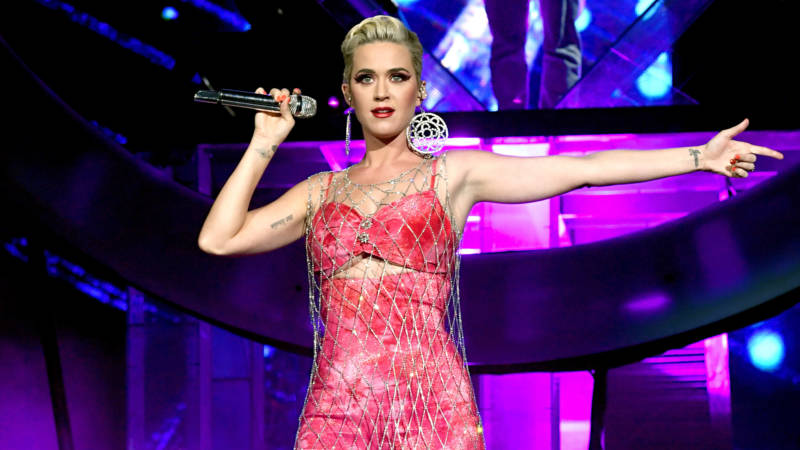After a seven-day trial, last week’s copyright infringement ruling against Katy Perry came down to four notes from her 2013 hit, “Dark Horse.”
On July 29, a jury ruled in favor of Christian rapper Flame, a.k.a. Marcus Gray, who says that Perry and her collaborators Juicy J, Dr. Luke, Max Martin, Cirkut and Sarah Hudson lifted the looped synth melody from Flame’s 2008 song “Joyful Noise.” Perry, the co-writers and her label, Capitol, now have to pay out $2.8 million dollars in damages. (Update, Sept. 23, 2021: Although Flame initially prevailed in court, a judge tossed the verdict against Perry in 2020.)
The decision prompted outcries from musicologists, intellectual property experts and music producers, who argue that it sets a dangerous precedent, encouraging self-censorship among composers and more lawsuits over basic similarities. Experts say that the case illuminates the discrepancies between the way copyright law is enforced and the real-life practices of pop music producers, who rely on derivative motifs and genre conventions to make hits.
Who gets to own basic songwriting elements?
The issue isn’t that “Joyful Noise” or “Dark Horse” are particularly original: both fuse generic elements of pop, trap and EDM—a style that’s come to define the sound of the 2010s. Though in different keys and tempos, both songs feature a descending minor-key progression with evenly spaced B and C notes.
This four-note progression is as basic as the major-scale power-chord riffs in punk, and Perry’s supporters argue that standard songwriting tropes like these should stay in the public domain. Indeed, well-known works like the Stranger Things theme song and LL Cool J’s “Doin’ It (Remix)” use descending minor-scale loops similar to those in “Dark Horse” and “Joyful Noise.”
In the trial’s closing arguments, Perry’s lawyer Christine Lepera said that the riffs in “Dark Horse” and “Joyful Noise” are so generic that trying to copyright them would be like “trying to own basic building blocks of music, the alphabet of music that should be available to everyone.” Some music producers now fear that the Perry lawsuit lowers the bar for what qualifies as copyright infringement, leaving their industry vulnerable to predatory lawsuits.


